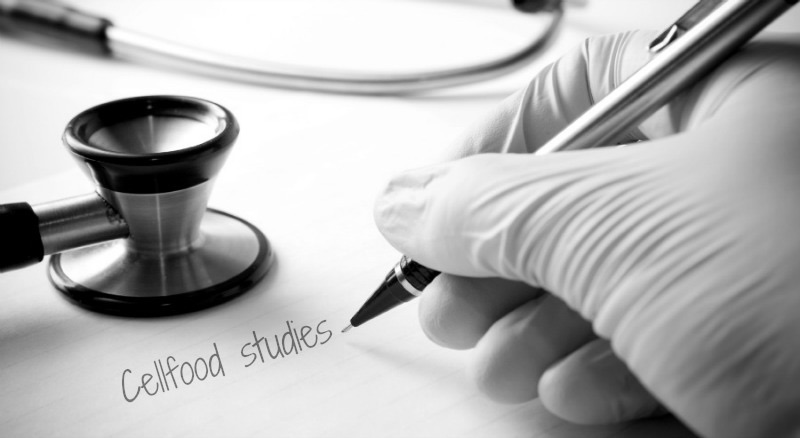
Cellfood Studies
In order to assure its potency, effectiveness, and reliability as a first line approach to overall wellness, Cellfood undergoes an ongoing regimen of rigorous laboratory testing, University research and other studies.
The following PDFs, highlighting a number of such research results, are available for reading, downloading, and/or printing:
Biological Antioxidant Potential Study
A study to test the hypothesis that Cellfood is able to reduce oxidative stress in vivo due to its intrinsic antioxidant properties in vitro.
Darkfield / Brightfield Microscopy Report
Clinical observations of Cellfood’s efficacy utilising blood analysis procedures.
Tests for the amount of dissolved oxygen in water with Cellfood, demonstrating an increase in oxygen over time.
A test that demonstrates Cellfood's ability to conduct electrical impulses.
University of Pretoria / Blood Profile Test
A series of double blind placebo clinical tests on professional and amateur athletes utilising Cellfood, measuring several indicators of blood health.
A laboratory study on the effect of Cellfood on the surface tension of water, indicating a shift toward the same surface tension as extracellular body fluids.
A laboratory test showing the ability of Cellfood to retard the growth of tested pathogen.
Antimicrobial Preservative Effectiveness Test
Tests for a product’s ability to kill organisms in drinking water.
Microbial Test for Log Reduction
Demonstrates the effectiveness of Cellfood — when used as a preservative or additive – to stop the growth of pathogens.
A study to measure the reduction of excess free radicals in the blood stream using Cellfood.
A study to determine the colloidal nature or behaviour of Cellfood; an analysis of the extent to which Cellfood functions in a manner similar to, and compatible with, body fluids.
A study of eight test subjects measuring the effects of Cellfood on meridian imbalances, utilising the AcuGraph Digital Meridian Imaging System. An additional case study — on one subject — is provided.
